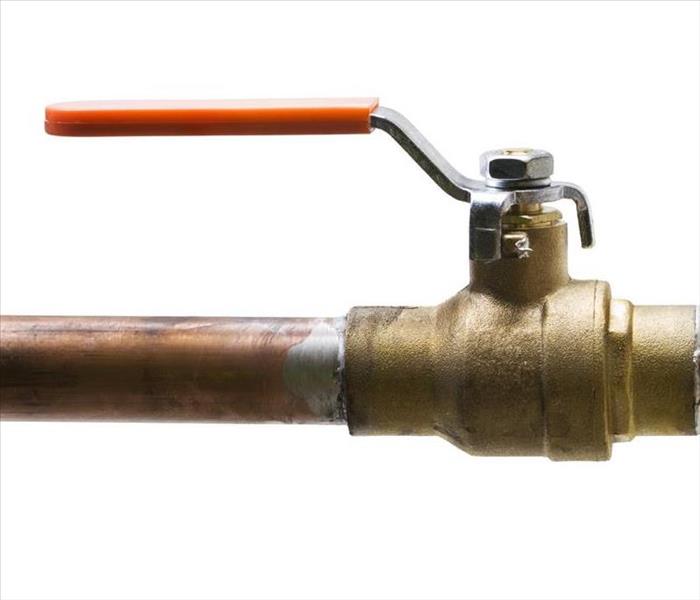Where is my Water Shut-off Valve Located?
9/18/2019 (Permalink)
Do you know where your main water shut-off valve is located?
It’s important to know where it is in case of an emergency. If a pipe bursts or a toilet overflows, shutting off the water can help reduce water damage. Sometimes homeowners will shut off their water if they are leaving town or replacing plumbing as a precaution.
The location of your water shut-offs can vary, depending on location, water source and type of residence. Shut-off valves can be hard to find, so grab a flashlight.
More Than One Shut-Off Valve
There are usually more than one shut-off valve in your home – once for each appliance that uses water and a main shut-off for the entire home.
Shut-off valves are usually located near the item that needs the water supply, for instance your valves for your toilet, sink, or washing machine are usually behind the units or under the sink.
For example, if your toilet is going to overflow, don’t waste time running to the main shut-off, use the knob behind the toilet.
Main Valve Locations
If you have well water, you may have two main shut-off valves, one that goes from the well to the pressure tank and another from the tank to your plumbing. If you need to shut off the well quickly, you can trip the circuit breaker to the well to deactivate the well pump.
If you have city water, your valve may be located in your homes utility room, along with the furnace or water heater. It may also be located in a plastic or utility box in the ground in front of your home.
Too late for the shut-off valve?
If your home or business has experienced water damage, SERVPRO of Franklin County can help.
If your home has water damage from flooding, a leaking pipe, or other source, you need the company that can respond immediately and has the expertise and equipment to properly restore your property. We use advanced water damage inspection and extraction equipment to help find the moisture and to remove it as quickly as possible. Our highly trained technicians will monitor and document the drying process so that you know your property is back to normal.
Please refer to our Water Damage Tips—Until Help Arrives Guide and follow these tips to protect yourself and your property.



 24/7 Emergency Service
24/7 Emergency Service
